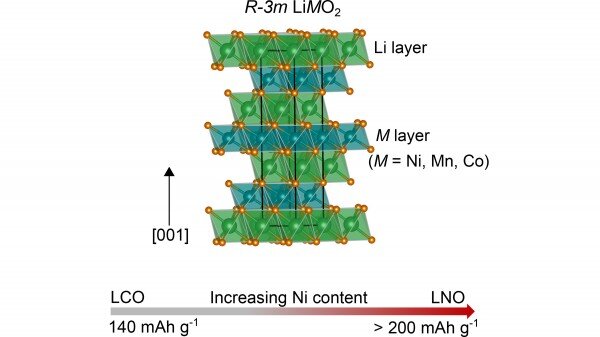#Road map outlines hurdles in next-generation cathode development for powering electric vehicles

“#Road map outlines hurdles in next-generation cathode development for powering electric vehicles”

The move to electric vehicles calls for a wide range of improvements in energy and power density, as well as more reliable and cost-effective lithium batteries. Next-generation cathodes look to provide such advances soon. Realizing these new compounds, however, will require extensive coordination across several scientific disciplines.
Researchers provided a road map for the field to improve on technology and techniques geared toward identifying new cathodes for electric vehicles. In APL Materials, scientists from the United Kingdom present the persistent fundamental challenges of the field.
“This road map not only sets out the direction of research in cathode materials, but it defines the benchmarks for various cathode chemistries, each with its unique market value,” said author Alisyn Nedoma. “The state-of-the-art synthetic methods we detail are shaping the emerging U.K. industry for cathode manufacturing.”
The road map outlines the strides in recent years, including protective coatings and additives that extend battery lifetime and improve ion transport, approaches to building cathodes optimized for high-density storage, and delivery of electrode designs resistant to fracture.
The positive economic implications, said Nedoma, are already becoming apparent.
“British scientists are racing to transform the automotive sector from fossil-fuel powered vehicles to sustainably powered vehicles by 2030, in line with the U.K. government’s net-zero goals,” said Nedoma. “The shift to battery manufacturing for electric vehicles will save roughly 90,000 car manufacturing jobs in the U.K. alone.”
The FutureCat project, designed to discover, develop, and deploy the next generation of cathode materials, is aimed at researching existing and emerging cathode chemistries. To date, the Faraday Institution has invested £330 million into research across the battery sphere.
Growth, however, poses its own challenges.
“With the increase in battery uptake, the materials utilized in cathodes need to be considered more judicially,” said author Sam Booth. “For instance, the low abundance of cobalt globally, coupled with increased demand, is putting pressure on natural resources.”
High-nickel cathodes now in development are an option for overcoming this supply issue, as are cathodes based on manganese and iron.
“Our technoeconomic evaluation of the cathode landscape will inform government strategies for investing in supply chains, infrastructure, and continued battery research,” Nedoma said. “For the everyday consumer, this road map lays out the expectations they can have for the lifetime, power, and safety of the next generation of electric vehicles.”
“Perspectives for next generation lithium-ion battery cathode materials” APL Materials, aip.scitation.org/doi/full/10.1063/5.0051092
Citation:
Road map outlines hurdles in next-generation cathode development for powering electric vehicles (2021, October 5)
retrieved 5 October 2021
from https://phys.org/news/2021-10-road-outlines-hurdles-next-generation-cathode.html
This document is subject to copyright. Apart from any fair dealing for the purpose of private study or research, no
part may be reproduced without the written permission. The content is provided for information purposes only.
If you liked the article, do not forget to share it with your friends. Follow us on Google News too, click on the star and choose us from your favorites.
For forums sites go to Forum.BuradaBiliyorum.Com
If you want to read more Like this articles, you can visit our Science category.


